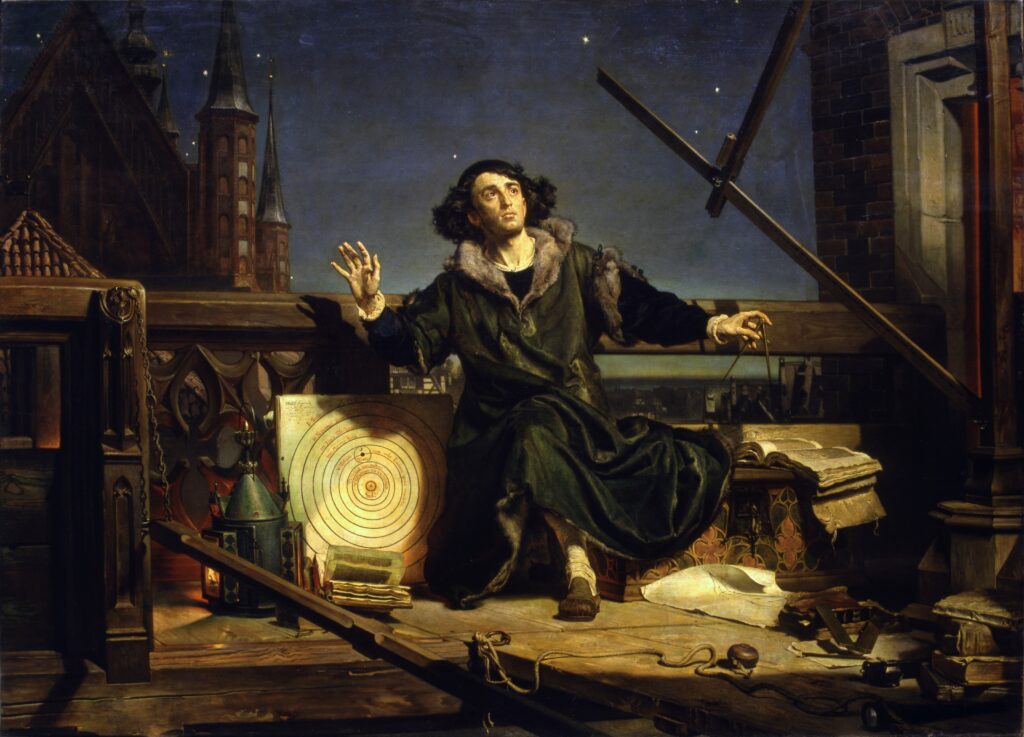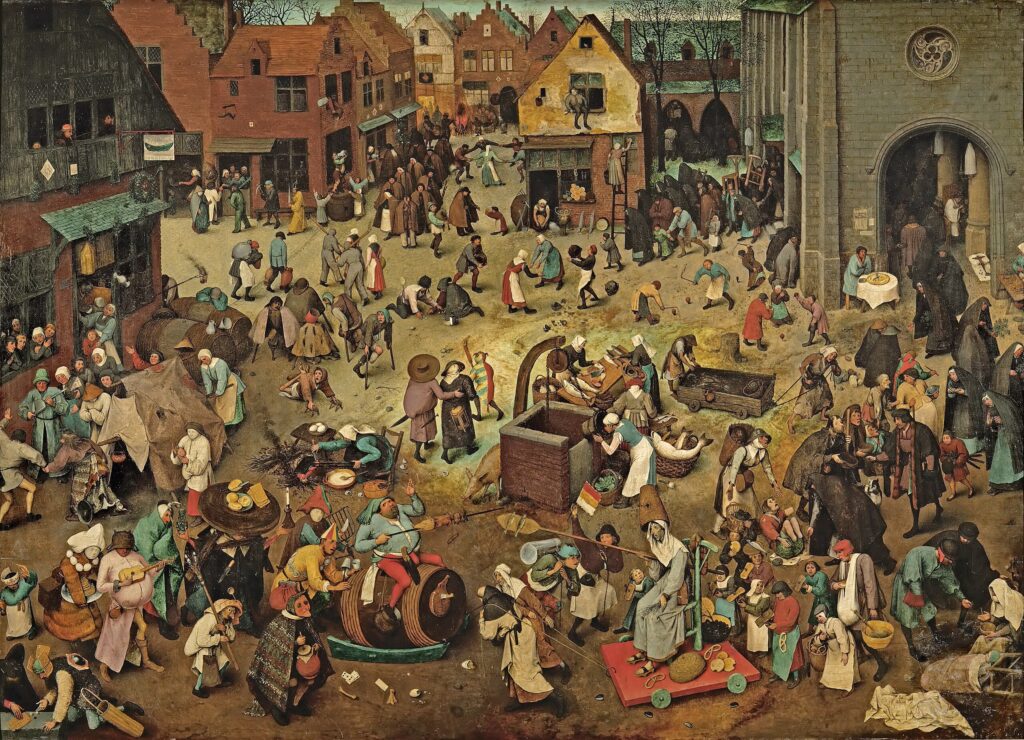As a fervent admirer of Jan Matejko’s illustrious body of work, it is the painting “Copernicus in the tower at Frombork” (1872-’73) that holds a special place in my heart. This masterpiece not only encapsulates Matejko’s unparalleled skill and stylistic flair but also evokes a profound sense of starry nostalgia and coziness, transporting viewers to a moment in history where the universe’s secrets were just beginning to unravel. In this article, I aim to explore the stylistic nuances, content, and the unique atmosphere that Matejko masterfully crafts in this iconic work.
Jan Matejko, renowned for his historical paintings, employed a meticulous technique that brought the past vividly to life. In “Copernicus in the tower at Frombork,” his use of chiaroscuro — the contrast between light and dark — is particularly striking. The soft illumination of Copernicus by the candlelight, juxtaposed with the dark, expansive night sky, not only highlights the central figure but also creates a dramatic and intimate atmosphere. Matejko’s brushwork, detailed and deliberate, captures the texture of fabrics, the aged walls of the tower, and the celestial bodies with equal finesse, showcasing his commitment to realism and historical accuracy.
A Moment Frozen in Time
The painting depicts Nicolaus Copernicus, the Renaissance astronomer, in a moment of profound contemplation and discovery. Surrounded by his instruments and manuscripts, Copernicus gazes out towards the heavens, symbolizing his groundbreaking realization that the Sun, not the Earth, is at the center of the universe. Matejko’s choice to capture this pivotal moment does more than immortalize the figure of Copernicus; it serves as a tribute to the dawn of a new era in human thought and understanding. The inclusion of various astronomical instruments and the open manuscript not only adds to the painting’s authenticity but also invites viewers to ponder the magnitude of Copernicus’s discovery.
Creating a Starry, Nostalgic, and Cozy Atmosphere
What sets this painting apart is Matejko’s ability to evoke a sense of starry nostalgia and coziness amidst a scene of monumental discovery. The warm glow of candlelight creates a feeling of intimate warmth, suggesting the cozy solitude of intellectual pursuit. This contrast with the vast, star-filled sky outside the window sparks a sense of wonder and infinite possibility. Furthermore, Matejko’s attention to historical detail, from the architecture of the tower to the period attire of Copernicus, fosters a nostalgic longing for a bygone era of exploration and discovery.
The true genius of “Copernicus in the tower at Frombork” lies in its ability to connect the viewer not only with the historical figure of Copernicus but also with the universal quest for knowledge and understanding. It reminds us of the humble beginnings of our expansive journey to comprehend the cosmos. Matejko, through his masterful blending of style, content, and atmosphere, invites us into a moment where the mysteries of the universe seem within reach, wrapped in a blanket of starry nostalgia and the cozy glow of discovery.
Conclusion
Jan Matejko’s “Copernicus in the tower at Frombork” is not just a painting; it is a portal to the past, a celebration of human curiosity, and a visual symphony of light and shadow. Its enduring appeal lies in its ability to evoke emotions, stimulate the intellect, and inspire a sense of connection with the pivotal moments that define our shared history. As a fervent admirer of Matejko’s work, I find this painting to be a testament to the power of art to transcend time, inviting us to gaze, once again, at the starry sky with wonder, nostalgia, and a cozy sense of home.





